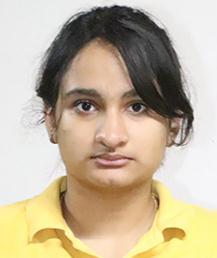International Research Journal of Engineering and Technology (IRJET)

e-ISSN:2395-0056
Volume: 09 Issue: 12 | Dec 2022 www.irjet.net p-ISSN:2395-0072
Viewpoints of the common villagers on Smart Village Development under Urbanisation and City Expansion Plan: A Case of Banandur, District of Karnataka
Pratishtha MaanStudent of twelfth Grade of International Baccalaureate Diploma Program, Step By Step School, Noida ***
Abstract - Development has been measured in terms of GDP, GNP, life expectancy rate and income and urbanization has often been considered a part of the socioeconomicdevelopmentofsociety.Thequalityoflifeof the villagers in the majority of Indian villages has been rated below and that’s why there is a need for transformation. It has been noticed that under government-sponsored projects of infrastructure development, the views of the local people are often ignored and suppressed. To study the viewpoints of the local people on the smart village development project a case of Banandur district Karnataka has been selected. This case study is based on the interview of 70 villagers from villages in Banandur, district of Karnataka, with different backgrounds, were interviewed and their responseswereanalyzed.
Words:People’sViewpoint,Inclusion,Smart Village,Sustainabledevelopment,Stake,etc.
1. INTRODUCTION
Development is often looked at in terms of numbers: GDP, GNP, life expectancy rate, income index etc., and urbanization is considered an imminent output of development. The quality of life in many rural settlements doesn’t fit well in these numbers and therefore, there has been an increasing demand and effortsbythestatetodevelopruralvillages.
Banandur development project is one such initiative of rural development. It’s intended to develop the space considering socio-economic equality, sustainability and inclusiveness.Theprojectisajointeffortofthestateand civil society organizations to make rural development possibleinthevillage.
The development projects in rural infringements oftenexcludethevoicesofthelocalpeople.Infact,many a times, the development projects lead to a lot of displacement for the local villagers. For development to be accepted and beneficial for everyone in the community, it’s important for the state to listen to local villagers and their problems and further situate the
development project in their context. However, often times, people’s voices are considered as a hindrance to developmentandareoftennotconsideredbythestate.
This study attempts to understand whether the proposed Banandur project of creating a smart village included people’s voices and opinions. A total of 70 villagers of different socio-economic backgrounds of the village were interviewed to explore and know whether andhowpeoplewereconsultedduringthedevelopment oftheproject.
2. LITERATURE REVIEW
Inthepresent-dayworld,therehasbeenalotoffocus on the development of the nation. There are many ways in which it has been recognised that a nation is developingandisonaprogressivepath.Whilethereare many aspects associated with the development of a nation, there is enough consensus amongst the researchers, scholars and even the policymakers that villages are the basic unit of a nation, and the basic development of a village can only lead to a nation’s development. But before we talk about how villages can be developed and what they can be developed into, we needtounderstandwhatreally,wemeanbyavillage. A narrow spatial view would hold that village a rural or a place in the countryside, but a deeper conceptual understanding of villages suggests that it is a lot more than that (Visvizi, 2018). It consists of the people, their practices,thewaytheyadapttotheenvironmentandthe facilities and much more. Thus, it becomes important to talk about all these aspects while talking about the developmentofavillage.
But let us also talk about what we really mean by development here and what kind of development we really want in the villages. Development is often associated with bringing about a change in human experiences at a particular place and time. Chambers (2004) argues that while we refer to ‘good change’ mostlywhenwearetalkingaboutdevelopment,weneed to question what we are really referring to as good because theoretically ‘bad change’ is also a sort of
© 2022, IRJET | Impact Factor value: 7.529 | ISO 9001:2008 Certified Journal | Page404
KeyInternational Research Journal of Engineering and Technology (IRJET)

e-ISSN:2395-0056
Volume: 09 Issue: 12 | Dec 2022 www.irjet.net p-ISSN:2395-0072
development.Goodchangeismostlyapositivegrowthin the living conditions and experiences of people pertaining to the environment, infrastructure, facilities etc. There are innumerable ways in which development has been defined by the people and has been looked at. Kanbur (2006) affirms that there is such a scattered definition and understanding of development because there is one answer to how human experiences are shaped.
Havingasenseoftheimportanceofvillagesbeingan important aspect of a nation's development and understandingwhatwereallymeanbydevelopment,we alsoneedtoquestionwhythevillagesneedtodevelopin the first place. What is it that they are lacking and what would development mean for us in the context of the villages? The world is changing very fast with growing technology and infrastructure. The cities have turned into metropolitans and have managed to acquire infrastructural and advanced developments to an extent that villages are far off. While the people in these cities haveaccesstoalotofopportunitiesandaccess,peoplein the villages are alien to a lot of these things. Moving towards an egalitarian society we need to be mindful of equal access and opportunities for the people living in whatever place they are. Cunha (2020) also suggests thatwhenwetrytoanalyzevillagesandtheexperiences ofthepeopletherekeepinginmindwhatpeopleincities have access to, we would be able to realize that villages are restricted because of many difficulties like lack of digital literacy which is very important in today's advancing world, unavailability of infrastructure and lackofaccessibility.
To achieve this goal of developing villages, many projects are taken up by the government and various private organizations to make these villages smart. Understanding whatwemeanbydevelopment,andwhy wewant the villages to develop, let us also look at what we really understand by a smart village and how we conceptualize it. The concept of developing into a smart village had a lot been defined in terms of the growth in infrastructureandtechnology. Kulkarni(2010)suggests thatsmartvillagescanbeverysimplyconceptualizedas acollectiveeffortofpeoplefromvariousbackgroundsto strengthen themselves with the help of some aid and combine these efforts with the growth of information technology so that the entire rural community can benefit.
But there is other research also that suggests a different perspective of a smart village. This research provides a more holistic view of what refers to the as smartvillageanditismorethanjustthedevelopmentof information technology. Viswanadham and Vedula (2010) suggest that a smart village should be able to
develop and provide several facilities to the rural population which include hygienic water facilities, medicalandhealthcareinfrastructure,adequatefarming opportunities, proper electricity supply, the manufacturing, and marketing sector should also have strongbuildupinthesmartvillages.
There have also been arguments that while developing villages into smart villages it should be kept in that the development would be ‘smart’ if the villages are developed sustainably. Gandhi also emphasized the importance of villages’ contribution to a nation’s development and hinted towards the sustainable development of the villages. But the understanding of sustainability here can vary among different people. Generally, sustainable development is linked with the development that takes into account environmental considerations. Using technology wisely can be an effectivemethodtodothat.Yang,Li,Chen,Sun,Fu,&Shi (2022) suggest that strategies for the development of a traditionalvillagearemadetakingthehelpofcomputers and the measures are taken accordingly then there is a lotofscopeforsustainabledevelopment.
Freshwater (2000) makes an interesting argument when he suggests that we talk about sustainable development globallyintermsof environmental aspects butwhenitcomestothecommunityofvillagesitshould also be looked at from an economic perspective which meansthatpeopleinthevillagesshouldbeabletoearna livelihood and have an income to sustain themselves. Winters(2011)remindsusofaveryimportantaspectas he says that in the long journey of developing smart spaces, it has been understood that the implementation of strategies to build a smart space start first with the peopleandthenwiththespace.
There are some other perspectives also on how villagesdevelopintosmartvillagesandwhataspectswe really need to focus on. Some people suggest that smart villages should be able to harness various energy resources smartly to function independently without depending on other institutional infrastructure to fulfil their basic needs. Apart from this, a place is said to be smartnotonlyonthebasisonlyofthefacilities.Robledo (2014)hasdefinedaplaceassmartforalivingifpeople from different contexts can exist friendly and peacefully while using the available resources most sustainably to reduce the negative environmental impact. As already suggested,onewayoflookingatitisthattheprovisions of health, proper educational facilities, clean drinking water and adequate sanitation facilities should be there in place and people should be able to generate a minimumbasiclivingalongwith-itpeopleshouldalsobe empowered(Holmes,2017).
International Research Journal of Engineering and Technology (IRJET) e-ISSN:2395-0056

Volume: 09 Issue: 12 | Dec 2022 www.irjet.net p-ISSN:2395-0072
Thus, the above arguments suggest that there is no way of understanding the concept of a smart village. While it can change with the context, it can also change with the people’s understanding of the same. The way a smart village is visualized in terms of using present-day energy resources can positively impact the growth of education facilities, infrastructural services, cleanliness inthevillagearea,participationinvariouspractices in a democratic manner, enhancing the productivity of the village while keeping in mind the environmental conditions for sustainable development both terms of economic sustainability and environmental sustainability. Chevalier (2014) argues that apart from all these aspects developing villages should also have a focus area of institutional development so that a village becomes more reliant on its internal and existing resources while regulating and checking external resourcestactfully.
So, our understanding of a smart village is that we can make a village smart by making it self-dependent in all aspects from providing facilities to generating employment for the people while not isolating the rural life from the rest of the world and enhancing the connectivity with the life outside villages. Moreover, rural life nurtures strong community and family relationships as people live in proximity. This forms the basis of the way village’s function and developing them into smart villages should not mean the loss of this aspectofrurallifeinanyscenario.
After understanding the meaning of a smart village extensively,ourfocusshiftstounderstandinghowsmart village projects are taken and we will try to analyze various aspects related to smart village projects. As mentioned earlier, it is not always the government that takes up these projects. A lot of times private and nonprofit organizations also take up the responsibility of making a village smart. But there are different things relatedtotheseintuitionsandorganizationsthatneedto be looked at. Any organization can only be successful in itsfunctioningwhenits ethics,principlesandvaluesare based on justice which is demonstrated by its actions and how it protects the rights of the individuals associated with it (Kohlberg, 1974). This also applies whenwetalkaboutorganizationfunctioningintherural context.
Therearecertainvaluesandwaysoffunctioningthat these organizations should uphold for developing the villageseffectively.Anorganizationthatisjustandequal in its approach can really work for the upliftment of the village communities following the lines of universal duties towards these communities. Working with rural communities and infrastructure can become very challenging for organizations so it needs to have proper
designandplaninplacetotackletheproblemsthatarise duetoruralconditions.Insuchascenario,thesuccessof an institution would be highly dependent on the way it internallyfunctions,thekindofworkcultureit provides to the people associated with it so that they remain driven towards it and the well-planned management of anorganizationanditsculture(Slivinskienė,2018).
So,anorganizationshouldbeabletodojusticetothe people associated with it in all ways. But this is not just limited to the people working for the organization but alsotothe rural population for whichan organization is tryingtobringaboutachange.Theruralpopulationalso has the rights, autonomy and individuality that needs to be considered before formulating any plans and transacting them. But many researchers suggest that in the name of uplifting rural communities and helping them, many times their autonomy and rights are compromised. It is of paramount importance to understand that village communities are the most importantstakeholdersinthewholeprocessofmakinga village smart and their needs, rights, and choices need the most attention. However, sometimes, both government and private organizations tend to fail in beingtrulyinclusive.
So, it is important that an organization also focuses on morality and being just. But a lot of times, even the most moral organizations fail to be egalitarian in their approaches. Wicks (1994) argues that an organization which focuses on moral values can be influenced by or influence various stakeholders including the rural community but still the decision-making power rests in thehandsof theorganizationitself. Thestakeholdercan be heard but inculcating their voices is at the mercy of theorganization.Moreover,theorganizationmighthave itsownbiasestowardsdifferentstakeholdersdepending on various aspects and local communities are the most vulnerable stakeholders in this case. This is so because whatever decision is being made would have a direct impact on these communities while they do have the powerofmakingdecisionsforthemselves.
Ifwetrytocomparethescenariowiththeprojectsof developingsmartcities,thereisnowenoughresearchto suggest what needs to be done to really make the cities people oriented which best suit their needs and choices (Almeida, Doneda & Moreira, 2018). However, in the contextofruraldevelopment,thereisnotenoughsimilar literature that would suggest the same for smart village projects. This may be because of a stereotype towards the village community that they are the ones who know less and are backward. This assumption can be very problematic both for the village community and the organizationtakinguptheroleofmakingavillagesmart.
International Research Journal of Engineering and Technology (IRJET) e-ISSN:2395-0056

Volume: 09 Issue: 12 | Dec 2022 www.irjet.net p-ISSN:2395-0072
Sometimes the organizations operate very formally as they define the roles of people working with them very restrictively. These people whose roles are defined by the organizations that they are a part of end up marginalizing the choices, needs, demands and rights of the local communities who need focus and precision in their decision-making (Schnake, 1991). So, what we understand from all these arguments is that one important aspect of making a village smart is that selfdependence gets lost as the decision-making power for the development of the villages does not really remain with the local communities and it is someone else who makeschoicesontheirbehalf.However,thereisnotonly anegativeaspecttoit.Iftheorganizationisreallydriven towardsitsgoalofdevelopmentofthevillage,thenitcan alsoactuallytakeintoaccounttheneedsofthepeople. If the organization is inclined towards really understanding and taking care of the needs of its stakeholders, then its planning and transaction provide thatsupporttothelocalcommunitieswhilemakingsure that the environment of the organization is good (Noddings,1984).
According to Callaghan and Herselman (2015), there are some important values that create and nurture the environment of an organization which are making different stakeholders like consumers, farmers communitymembersworkersetcthemainactressinthe action plan, including the local communities and collaborating with them, using sustainable products in the whole process and create an engaging socioeconomic environment for the empowerment of the people. Community involvement is very important for thesuccessofanysuchproject.Itisunderstoodthatthe organizational stakeholders have more power but when they actively engage with the community and people with unequal power relations work together, then there is a possibility of building something for the common good(BondyandCharles,2018).Andthisresultsinalso building a sense of belongingness amongst each other. Wicks (1994) suggests that when there is a sense of belonging to a particular group or a goal, then different stakeholders also end up understanding each other and workingclosely.
3. Setting
Bandandur is a small hamlet in the Ramanagara Taluka in the district of Ramanagara of the Karnataka state in India. It’s situated at NH-275, around 36 km from Bengaluru, the state capital of Karnataka. The village is surrounded by the Kanakapura Taluka towards South, Bangalore Taluka towards North, Channapatna Taluka towards West and Magadi Taluka towards east. The villagecomesundertheBanandurpanchayat.
Figure -1:Mappingofthesite(BanandurVillage)



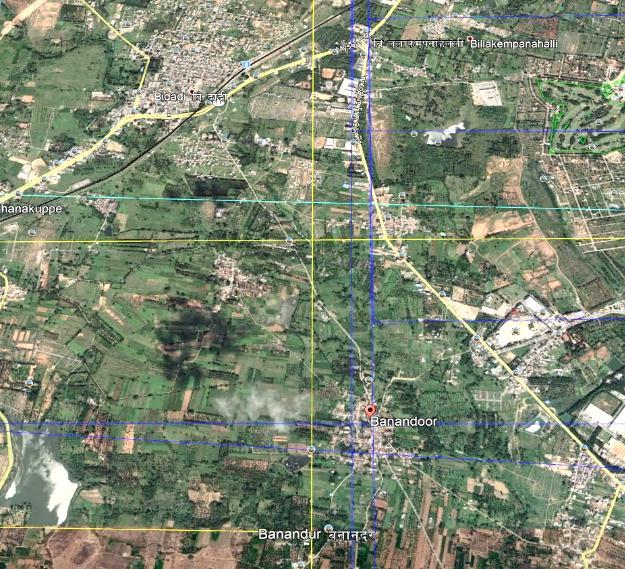
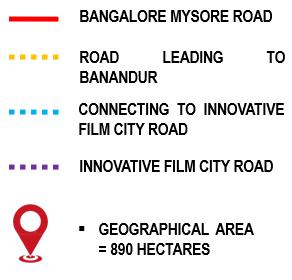
The total population of Banandur village is 4767 according to the census 2011. Out of which, 39.8% is female population and 60.2% is male population. The literacy rate of the district is 72.8%. The working populationhas74%maleand26%femalepopulation.
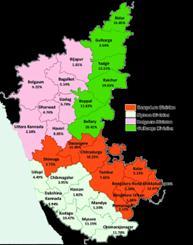
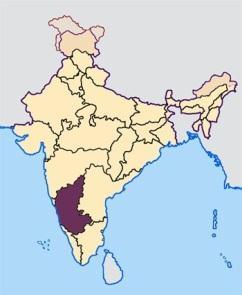
4. Methodology
A total 70 villagers were interviewed for this study. A semi-structured interview questionnaire was prepared; the questionnaire had both objective and subjective questions. There were linguistic barriers for the researcher,therefore,helpfroma local villager(Mohan) was taken who knew both Kannada and Hindi. Interviewswerethenconductedandanalyzed.
International Research Journal of Engineering and Technology (IRJET)

e-ISSN:2395-0056
Volume: 09 Issue: 12 | Dec 2022 www.irjet.net p-ISSN:2395-0072
5. Data Analysis
5.1 Gender
Out of 70 respondents, 13 were female and 57 were male.Thus,81.4%weremaleand18.6%werefemale.As most of the women remain at home, it was difficult to access women in the area. Therefore, most of the respondentsweremale.
5.2 Age
Chart -1: Genderoftherespondents
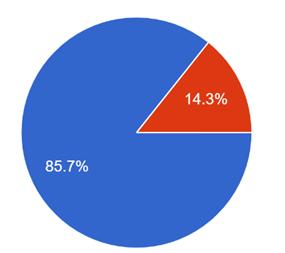
Mostoftherespondentswerefromtheagegroupof2540 years (58.6%). 14.3% of respondents were above 40 and21.4%werebetween18-25yearsofage.
5.4 Channel of Awareness
Itwasinquiredhowdidpeoplecometoknowaboutthe project, most of the people came to know about it through other villagers and the Gram Panchayat. 81.4% peopleshared thattheyknewabouttheprojectthrough thesesources. ]
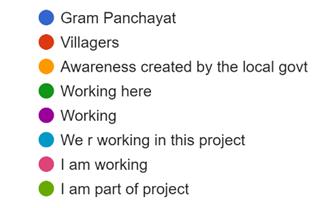
Chart -2:Agegroupsoftherespondents
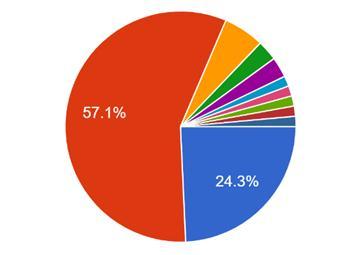
5.3 Awareness of the development project
Respondents were asked if they knew about the Banandur development project. 85.7% of the respondents knew about it, and 14.3% replied in negative
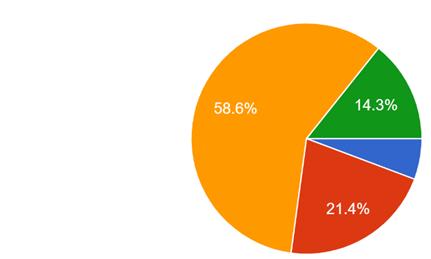

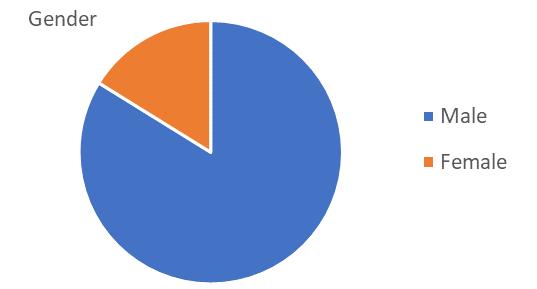
Chart -4: Respondent’schannelofawareness

5.5 Awareness of the Vision
Villagerswereaskediftheyknewaboutthevisionofthe project. 81.4% of villagers said that they know what the projectisabout,and18.6%didn’tknowwhattheproject isabout.
International Research Journal of Engineering and Technology (IRJET)

e-ISSN:2395-0056
Volume: 09 Issue: 12 | Dec 2022 www.irjet.net p-ISSN:2395-0072
Chart -5: Respondent’sawarenessoftheVision


5.6 Awareness of the project benefits
It was inquired if the villagers felt that the project was for their benefit. 65.7% of the villagers said that the project was in their interests but 31.4% of the villagers didn’t think of it beneficial and the rest were not completelysureoftheoutputoftheproject.

Chart -7: Villager’sconsentforthedevelopmentofthe project
5.8 Consideration of local lives
People were asked if their issues and local living style were taken into consideration in the development project,78.6%repliedyesand15.7%saidno.
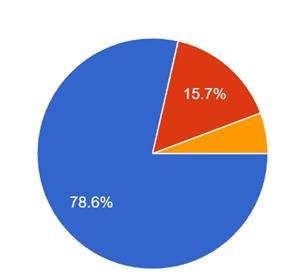
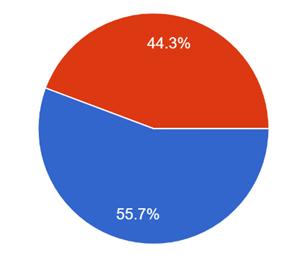
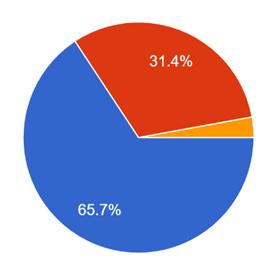

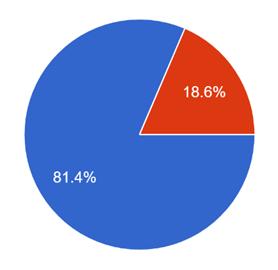
Chart -6: Respondent’sawarenesstowardsthebenefits oftheproject
The villagers were further asked how the project will benefit them, and they gave a number of reasons including the construction of hospitals, roads, textile buildings, marriage hall, etc. The villagers seemed welcomingoftheproject.
5.7 Consent of the people
A whopping 55.7% of the respondents said that they were not informed or consulted regarding the development project, and 44.3% said that the project wasdiscussedintheGramPanchayat.
Chart -8: Considerationofthelocalvillages
6. Conclusion
The various responses of the villagers indicate that they wereawareofthedevelopmentprojectandwereexcited about the prospect of getting hospitals, pucca roads, textile buildings, etc. in their village through the development project of the smart village. This shows that the efforts of the government and civil society organizations adopted a participatory development model, which is commended by the responses of the villagers.
International Research Journal of Engineering and Technology (IRJET) e-ISSN:2395-0056

Volume: 09 Issue: 12 | Dec 2022 www.irjet.net p-ISSN:2395-0072
However,itseemsthatthevillagerswerenotthoroughly consulted while the project was being prepared, even though they are in support of the project when it was presented to them. For any, rural infringement development, it’s important for the villagers to be on boardfromthestart,andit’sinconstantcollaborationof the state, civil society organizations, and local people thatadevelopmentprojectwouldbebeneficialforall.
ACKNOWLEDGMENT
I am thankful to the residents of the village Banandur , Dexterous Designers and Associates and Pinnacle constructioncompany, forhelping me in the collation of dataandconductingtheresearch.
REFERENCES
1) Almeida,V.A.F.;Doneda,D.;Moreira da Costa,E. HumaneSmartCities:TheNeedforGovernance. IEEEInternetComput.2018
2) Bondy, K., & Charles, A. (2018). Mitigating stakeholder marginalisation with the relational self.JournalofBusinessEthics,1–16
3) Callaghan, R. & Herselman, M. (2015). Applying aLivingLabmethodologytosupportinnovation in education at a university in South Africa. TD The Journal for Transdisciplinary Research in SouthernAfrica,11(1),21–38.
4) Chambers,R.(2004)IdeasforDevelopment.IDS WorkingPaper238.Sussex:IDS.
5) Chevalier, P., Mačiulytė, J., Dedeire, M., Prapiestienė, R. & Razafimahefa, L. (2014). Vietos iniciatyvos ir teritorinis vystymas: LEADER programos įgyvendinimas Lietuvoje ir Prancūzijoje. Geografija 50(2), 76–85. DOI: 10.6001/geografija.v50i2.3004
6) Cunha, C.R.; Gomes, J.P.; Fernandes, J.; Morais, E.P. Building Smart Rural Regions: Challenges andOpportunities.InTrendsandInnovationsin Information Systems and Technologies; Rocha, Á., Adeli, H., Reis, L.P., Costanzo, S., Orovic, I., Moreira,F.,Eds.;AdvancesinIntelligentSystems and Computing; Springer International Publishing:Cham,Switzerland,2020
7) Freshwater,D.(2000).RuralAmericaattheturn of the century: One analyst's perspective. Rural America/Rural Development Perspectives, 15(2221-2019-2445),2-7.
8) Holmes, J. et al. (2017). The Smart Villages Initiative: Findings 2014–2017. Cambridge: TrinityCollege
9) Kanbur,R.(2006)What’sSocialPolicygottodo with Economic Growth? Available at http://www. arts.cornell.edu/poverty/kanbur/ (accessed1August2005)
10) Kohlberg, L. (1974). The claim to moral adequacy of a highest stage of moral judgment. TheJournalofPhilosophy,70(18),630–646.
11) Kulkarni, Milind. (2015). Clean and Smart Village : Aspects and Alternatives, Dr. Milind Kulkarni (2015), International Journal of Research in Engineering, Science and Technologies – Civil Engineering, ISSN 23956453
12) Noddings, N. (1984). Caring, a feminine approach to ethics & moral educatio. In V. Held (Ed.), 1995 Justice and care: Essential readings infeministethics(pp.7–30).Boulder:Westview Press.
13) N Viswanadham2010, Service Science & Engineering Research in India: Agenda for the third Service Revolution in India, Report presentedtotheScienceAdvisoryCounciltothe PrimeMinisterofIndia
14) Robledo, J. G., Larios, V. M. & Gomez, L. (2014). Living Lab for Smart Territory [technical report]. University of Guadalajara. DOI: 10.13140/RG.2.2.24925.67047
15) Schnake, M. (1991). Organizational citizenship: Areview,proposedmodel,andresearchagenda. HumanRelations,44(7),735–759.
16) Slivinskienė, R. (2018). Kaimo vietovės organizacinėskultūrosvaldymomodelis[Master Thesis]. Akademija: Aleksandro Stulginskio universitetas.
17) Visvizi,A.;Lytras,M.It’sNota Fad:SmartCities and Smart Villages Research in European and GlobalContexts.Sustainability2018
18) Wicks, A. C., Gilbert, D. R., Jr., & Freeman, R. E. (1994). A feminist reinterpretation of the stakeholder concept. Business Ethics Quarterly, 4,475–497.
International Research Journal of Engineering and Technology (IRJET)

e-ISSN:2395-0056
Volume: 09 Issue: 12 | Dec 2022 www.irjet.net p-ISSN:2395-0072
19) Winters, J.V. Why are Smart Cities Growing? WhoMovesandwhoStays*.J.Reg.Sci.2011
20) Yang, R., Li, X., Chen, J., Sun, H., Fu, G., & Shi, H. (2022, January). Research on Sustainable Development of Traditional Villages Based on Computer Technology A Case of Shenjiang Village.In2022InternationalConferenceonBig Data,InformationandComputerNetwork
BIOGRAPHIES
Ms.PratishthaMaanis astudentinthe twelfth grade in, International baccalaureate Diploma Program at Step-by-Step School, Noida. She is interested in architecture and development in urban and rural areas. Self- sustaining and sustainable development interests her. She has started an organisation ‘Helping Hands’tohelpherworkinherareasof interest as well as help others. During Covid (second wave) she has collaborated with the Noida Authority to provide free vaccinations to the underprivileged and has organised manycamps.
